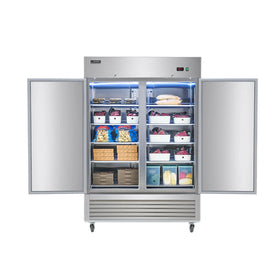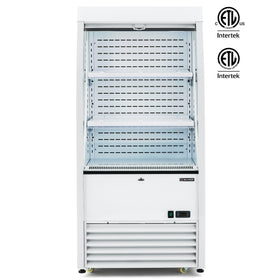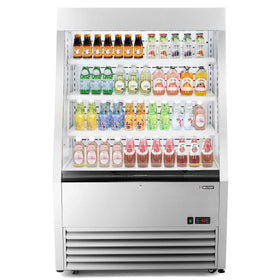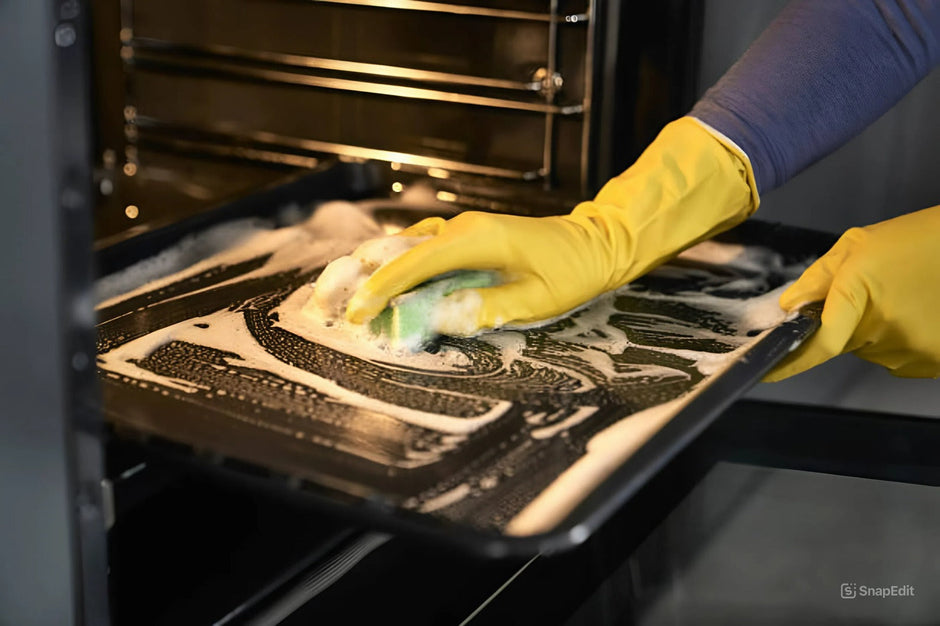Moving a refrigerator by yourself—especially to clean behind it—can be tricky, but it’s totally doable if you're careful, methodical, and use the right tools. Whether you are moving a standard commercial refrigerator at home or a commercial refrigerator to your place of business, you want to make sure to keep it upright and properly secured.
Here is a complete guide to help you move your fridge without scratching the floor and clean the area behind it safely.

How to Move a Refrigerator by Yourself (at Home)
To move a refrigerator by yourself, you need a furniture dolly (or appliance rollers), some felt pads, cardboard sheets, or a moving blanket, and (maybe) a friend on standby in case something goes wrong.
Step-by-Step: Moving a Fridge Safely
1. Unplug the Refrigerator (Optional but Recommended)
- If you’re only moving it a short distance (a few feet), you can leave it plugged in.
- Otherwise, unplug it and secure the cord with a zip tie or tape to prevent tripping.
Important: If you unplug it and tip it, let it stand upright for at least 30 minutes before plugging it back in again.
2. Empty or Lighten the Fridge
- If your fridge is particularly heavy or packed, remove heavy items (especially glass containers) to reduce weight and prevent spills.
3. Protect the Floor from Being Scratched
- Lay down felt pads, sheets of thick cardboard, or a moving blanket under the fridge’s front feet.
- You can also place Teflon or plastic gliders under the feet if available.
4. Gently Tilt and Slide
- Grab the sides or the base, NOT the handles or the water line.
- Slowly rock the fridge side to side to ease it away from the wall. You’re shifting weight, not dragging it in one big movement.
- Once it’s tilted slightly, slide a piece of cardboard or a towel underneath each foot or wheel.
- Gently pull the fridge straight out. Don’t twist or turn while pulling—it can gouge the floor.
Tip: If your fridge has rear wheels, you can carefully tilt it backward and wheel it out.
5. Use a Dolly or Appliance Rollers (Optional)
- Appliance rollers or an upright dolly designed for refrigerators make the job far easier.
- Always strap the fridge to the dolly and move slowly.

Tips For Cleaning Behind and Under the Refrigerator
1. Vacuum First
Use a vacuum with a brush or hose attachment to clean any dust bunnies, pet hair, or loose food debris behind the fridge
Clean the condenser coils while you’re at it—dirty coils reduce cooling efficiency.
2. Sweep and Mop
- Sweep up remaining debris with a broom and dustpan.
- Mop with a mild cleaning solution—something safe for your flooring type (wood, tile, linoleum, etc.).
- Let it dry completely before sliding the fridge back.
3. Putting the Fridge Back in Place
- Ensure the floor is clean and dry.
- Use your gliders/felt pads/cardboard again for the return trip.
- Push evenly from the base, not from the top or door handles.
- Plug it back in once it's back in place and standing upright.
Common Mistakes to Avoid When Moving Your Refrigerator
| ❌ Mistake | ✅ Better Option |
| Dragging the fridge directly | Use gliders, cardboard, or a dolly |
| Pulling from the top/doors | Push/pull from the base/sides |
| Forgetting to protect the floor | Use padding before moving |
| Not cleaning coils | Vacuum them while it’s out |
| Tilting too far | Only slight angles; avoid tipping |
- Preparation is key. Protect your floor before you move anything.
- Take your time. Slow, steady movement prevents both injury and floor damage.
- Maintain regularly. Clean behind your fridge every 6–12 months for optimal performance and hygiene.
How To Transport Your Refrigerator
A truck is the most common and safest way to move a refrigerator because most trucks have enough vertical clearance to allow you to move it in an upright position.
If you are moving a big commercial refrigerator like the 3-door commercial reach-in refrigerator, you basically have no choice but to move it in the truck.
Also, there is enough space on trucks to secure the fridge properly, and often a ramp to make it easier to load and offload the fridge without heavy lifting or excessive tilting.

How to Transport a Refrigerator in a Truck
Transporting a refrigerator in a truck requires careful planning, especially if you want to avoid damaging the compressor, coolant lines, or the internal seals. You must try as much as possible to keep the fridge in an upright position and secure it firmly.
Here's exactly how to transport a refrigerator in a truck, including whether you can lay it down on its side.
1. Empty and Defrost the Refrigerator
- Remove all food, shelves, drawers, and ice trays.
- Unplug the fridge at least 6–8 hours before moving.
- Let it defrost fully to prevent leaks (especially important for freezers).
- Wipe it dry inside to avoid mold and water damage during transport.
2. Secure Doors and Cords
- Tape the doors shut with strong packing tape or use bungee cords.
- Bundle and tape the power cord to the back of the fridge so it doesn’t drag or get caught.
3. Use a Dolly or Helpers to Load It
- Always move the fridge upright using a dolly, lift gate, or two people.
- Never tilt it more than 45 degrees when maneuvering.
4. Position It Correctly in the Truck
- The ideal way to transport a refrigerator in a truck is in an upright position. This is always the safest.
- Use ratchet straps or ropes to secure it against the side wall of the truck.
- Place it on a moving blanket or pallet to absorb vibrations.

Can You Lay a Refrigerator on Its Side?
Though it is possible to lay a refrigerator on its side, it is highly ill-advised. When a fridge is placed on its side, compressor oil can flow into the refrigerant lines, which can cause severe damage when it is eventually placed upright and plugged in.
- Coolant can pool incorrectly, messing with internal pressure and flow.
- The internal glass shelves or drawers may crack under sideways pressure if left inside.
You can lay a refrigerator on its side, but only if necessary—and with precautions.
If You Must Lay Your Refrigerator Down, Follow These Rules:
Rule#1: Look at the back of the fridge.
The compressor lines should face up, not down.
| Type of Fridge | Safe Side to Lie On |
| Top-freezer models | Usually OK to lay on the opposite side of the compressor lines. |
| Side-by-side models | Not ideal—keep upright if at all possible. If you must, consult the manual. |
| Bottom-freezer models | Avoid laying down unless absolutely necessary. |
Rule#2. Do Not Plug It Back In Immediately
If you had to lay the fridge on its side, let it sit upright for the same amount of time it was on its side before plugging it back in—at least 4–6 hours, preferably 24 hours. This allows the compressor oil to drain back properly.
You can lay a fridge on its side in emergencies, but it’s much safer and better for the fridge to keep it upright during transport, strap it securely, and let it rest afterward if tipped.
Final Tips
- Always transport upright if you can. If you can’t, choose the safest side and allow recovery time before use.
- Use plenty of padding and tie-downs to prevent tipping or sliding during transport.
- Never turn the fridge on immediately after it’s been moved on its side.
Explore these 4 common reasons for fridge leaking, and this guide on cleaning a glass door oven.










